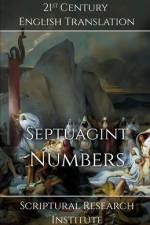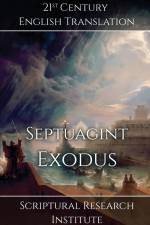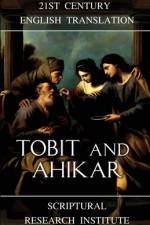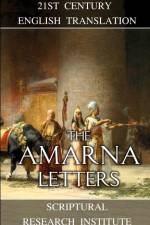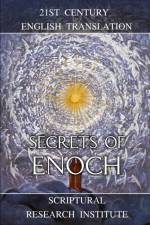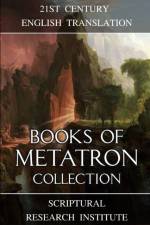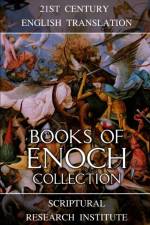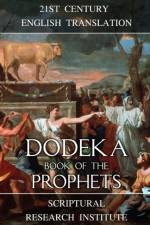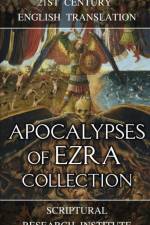av Scriptural Research Institute
299,-
The two books of Ezra were translated into Greek and added to the Septuagint before 200 BC when a large number of refugees fled the ongoing wars in Judea and settled in Egypt. 2ⁿᵈ Ezra became in the Masoretic Texts' version of Ezra, and by the year 100 AD the Apocalypse of Ezra was also in circulation as 3ʳᵈ Ezra. The original 2ⁿᵈ Ezra was later divided into two books in Latin translations, making a total of four books of Ezra, although one was later renamed Nehemiah. The two books of Ezra found in the Septuagint, are variously divided into two or three books, depending on the religious denomination. 2ⁿᵈ Ezra is equivalent to the Masoretic Ezra, which is used by Jews, however, there is no Hebrew version of 1ˢᵗ Ezra. Christian Orthodox, Coptic, and Tewahedo Bibles continue to use translations of the Septuagint, and therefore the books continue to be 1ˢᵗ and 2ⁿᵈ Ezra. Catholic Bibles call 1ˢᵗ Ezra 3ʳᵈ Esdras, and have 2ⁿᵈ Ezra divided into the books of Ezra and Nehemiah. Most Protestant Bibles do not include 1ˢᵗ Ezra, and have 2ⁿᵈ Ezra divided into the books of Ezra and Nehemiah. The book called 4ᵗʰ Ezra in Catholic Bibles was never in the Septuagint and is about a different Ezra who lived earlier during the Babylonian Captivity.The Septuagint's 1ˢᵗ and 2ⁿᵈ Ezra are thematically similar, telling generally the same story, however from two different points of view. They tell the story of the fall of Jerusalem, first to the Egyptians, and then the Babylonians, followed by Babylon's fall to the Persians, and the Judahites to Judah to rebuild the Temple in Jerusalem. 1ˢᵗ Ezra was written from a non-spiritual viewpoint, common among the Sadducees, and repeatedly makes it clear that the author, Ezra, and various kings, viewed the Lord as the Judahite version of other gods, including the Egyptian creator and Sun-god Atum, and the Zoroastrian 'god of truth' and 'King of the Sky' Ahura Mazda. These views are inconsistent with the view of the Pharisees, which developed under the rule of the Hasmonean dynasty after Judea broke free from the rule of the Greeks, and the Lord became a separate god from all others.Both the Greek translations of 1ˢᵗ and 2ⁿᵈ Ezra, and the Hebrew translation of Ezra, contain relics of an Aramaic source-text, unfortunately, the Aramaic Book of Ezra-Nehemiah is lost. The difference in the surviving Aramaic words within the Greek 1ˢᵗ Ezra, and Hebrew Ezra-Nehemiah (Greek 2ⁿᵈ Ezra), it appears that the two versions of Ezra already existed in the Aramaic versions. The differences between 2ⁿᵈ Ezra and Masoretic Ezra-Nehemiah are minimal and could be accounted for as scribal notes, and the redaction of Simon the Zealot, who added the name Yahweh extensively to the ancient texts when he translated them into Hebrew. 1ˢᵗ Ezra, the less spiritual of the two versions of the Septuagint's Ezra, clearly dates to the end of the Persian era, as it treats the Judahite Lord of the Temple in Jerusalem as another version of Ahura Mazda, the Zoroastrian God. Several Zoroastrian titles of Ahura Mazda are applied to the Judahite Lord, including King of Truth, and King of the Sky. Letters from the Persian Kings Cyrus II, Artaxerxes I, and Darius II, as included in the book, all of which were closely associated with Zoroastrianism, yet, referred to the Judahite Lord using titles generally associated with Ahura Mazda. In the Greek 1ˢᵗ Ezra and 2ⁿᵈ Ezra, as well as Masoretic Ezra, the temple is described as being a Zoroastrian fire-temple, containing an eternal fire, which 2ⁿᵈ Maccabees even referred to as being burning naphtha in the time of Nehemiah, like the other fire-temples across the Persian Empire.


